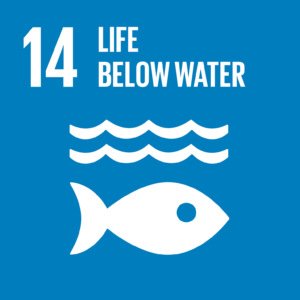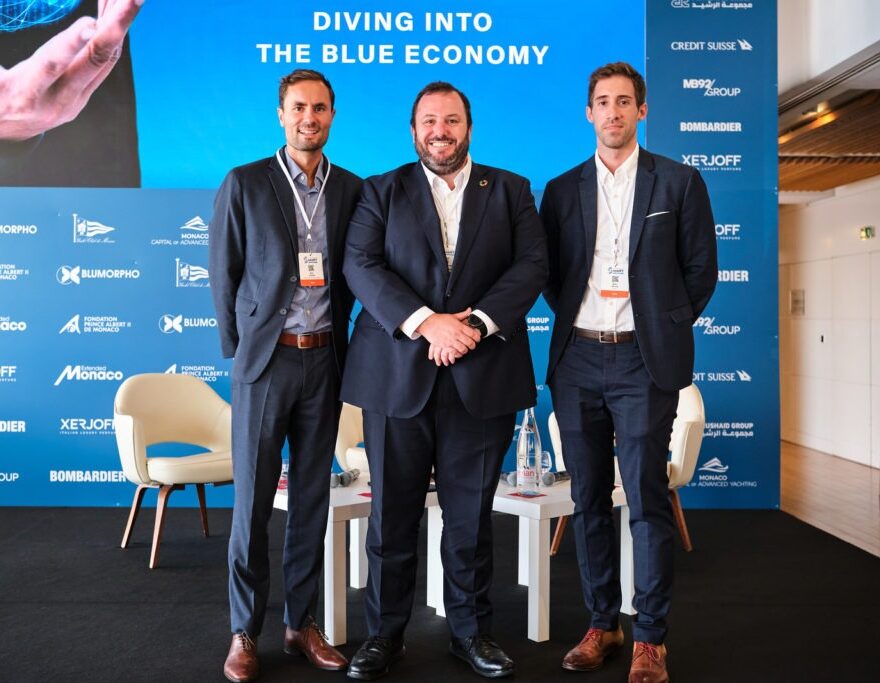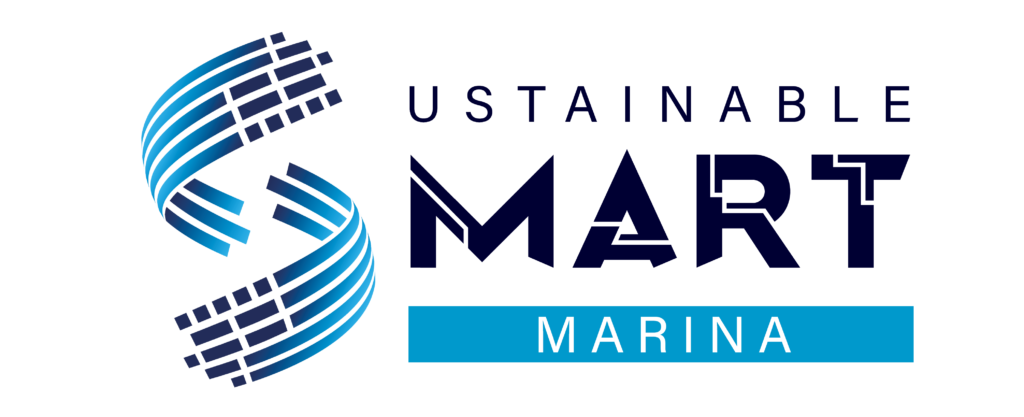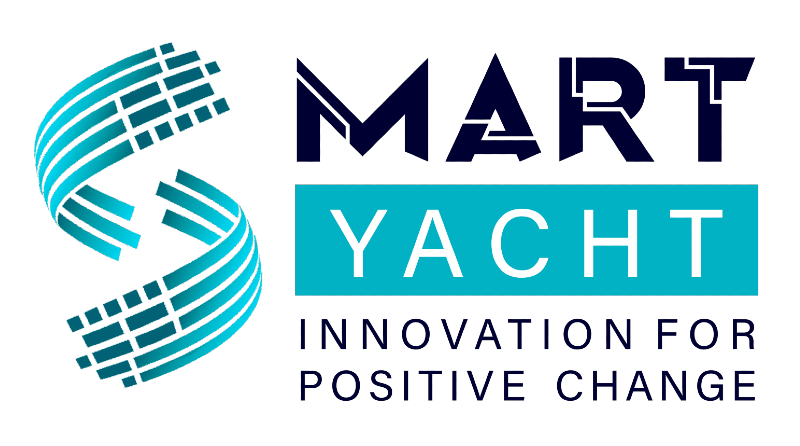Open discussion
Defining the Blue Economy
The World Bank defines the blue economy as the “sustainable use of ocean resources for economic growth, improved livelihoods, and jobs while preserving the health of ocean ecosystem.“ (World Bank)
This concept includes contributions to the maritime world, but not only. In many cases, it targets a minimized impact on the Ocean, or even an active contribution to the Ocean’s regeneration and inclusion in the global economy. It is a fantastic growth opportunity, but it does need to be addressed in consideration of sustainability.
The blue economy tackles a large number of Sustainable Development Goals, as it can answer a large number of imperatives. For instance, food security, health, energy, infrastructure, resilience to climate change, and of course SDG14 “Life below water” (United Nations).

State of the art: where is the industry at today?
It is considered an emerging concept; however, it combines many verticals that are not necessarily new. At this stage, this field remains limited to a small community of actors, strongly committed, and mainly focused on ocean issues. And there are many in this community who wish to break the silos. This approach can only be successful without any limitation, especially not to be strictly focused on ocean centered activities.
Blue economy is a small part of a wider strategy, a green economy that aims to tackle climate change. But the goal is also to succeed in transforming polluting industries, to take advantage of this dynamic momentum to involve others in this approach. This applies to industries such as the shipping industry. Nevertheless, we should not restrict it to that.
One of the problems faced in this sector is the lack of capital. In a live poll conducted at the BlueFIN2022 Summit (World Ocean Council), the audience was asked the following question: “what are the barriers you are facing at this stage for investing in the blue economy?”
And the answers were enlightening about these issues:
- Coming first amongst all the different answers was lack of capital,
- Regulations – or once again lack of,
- ROI time,
- And in general, a lack of awareness.
Now remains the question, how can we leverage on the current status quo?
What else is needed ?
To attract capital in this industry, there is a need for strong business cases, demonstrating both sustainability and economic value. “Entrepreneurs can be the leading actors in transforming ecological challenges into economic opportunities while developing innovative and viable sustainable business models.” (SwitchMed)
All this change comes first from an increase in access to data. the knowledge of our ocean is still too weak – yet it is vital for this future. And data has to come along “legally binding agreements, capable of integrating future scientific discoveries, technological innovations and new political paradigms” (Ocean & Climate Platform, 2019) to ensure the sustainable exploitation of the Ocean and avoid going towards practices such as deep-sea mining.
The goal is to manage to include ocean, as well as biodiversity in businesses’ impact assessment. It is hard to explain the benefit of preserving biodiversity without putting a label on it, in order to quantify the impact, both the positive impact on the environment, but also the financial and business impact. This applies to the current impact, but also the long-term savings this could lead to. More and more banks are currently looking into these topics, but data is key for this to go to scale.

This applies to many industries. Oliver Withers, Head of Biodiversity at Crédit Suisse reminds that the “blue economy” is very recent. This expression is used since 2012, therefore we are still facing a lack of data. This is precisely what Marc Hervas, Head of Sustainability at MB92, has noticed in his experience. He explains that “When it came to sustainability, we had no data, no guidelines to follow. So we had to do everything from scratch.” Olivier Wenden’ words resonated with this, as he shares the perspective of the Prince Albert II of Monaco Foundation.
A few trends
It is assumed that Blue Economy solely includes actors that are one hundred percent dedicated to the ocean. There are no such barriers. When navigating this ecosystem, an outside eye could be under the impression that some innovations do not belong there. That is the magic behind the blue economy. In reality, many unexpected innovations could fit in a blue process. Indeed, a holistic approach is needed to fully embrace the challenges. In the blue economy, it is common to find issues that would need solutions from industries that could seem distant.
Let’s take a look at some examples. For instance, all submerged elements require special treatment, especially boats, but also pipelines and the material industry can therefore have a direct impact on biodiversity protection if new solutions can mitigate the impact of infrastructures on natural ecosystems. The impact can be even more direct when the innovation consists of creating artificial reefs or any other form of marine habitat.
Innovation can come from unexpected and previously unimagined directions, such as this crazy idea allowing hair waste to be used to make hair-booms, to absorb oil spills (Heap, 2021). In addition to mitigating ocean pollution, it makes the hairdressing industry greener. Still in the chemical industry, marine resources such as algae, shells, or even lobster carapace are being used, creating more sustainable alternatives to existing solutions. This can be extended to Agtech.
Indeed, alternative proteins can be created from microalgae. And having a direct impact on ocean protection, AgTech might have the answers to the challenges encountered in developing sustainable aquaculture. As fish consumption is growing worldwide, aquaculture is looking for “alternative dietary ingredients that will reduce the amount of fishmeal and fish oil contained in aquaculture feeds while maintaining the human health benefits of farmed seafood” (Fisheries, 2019). And the solution could even come from insect farming: this is what startup Ynsect is working on. Their solution is both sustainable, and financially viable since fishmeal prices have quadrupled over the past 15 years.
And to go further, let's chat
Solutions come from different horizons. If the blue economy seems to be a new phenomenon, it is above all a field of possibilities that has remained unexplored until now, or has only been explored with little visibility.
Thus, the innovators who position themselves today in favor of the protection of the Ocean have everything to win. Both a forerunner in the field of the environment and a pioneer in their field – all industries considered – the blue economy is a universe in which businesses must position themselves now, to build the future.
The BLUMORPHO team is engaged in the Blue Economy. We would be happy to further share with you our analysis of the Blue Economy, its evolution and opportunities for new value proposition.
Do not hesitate to contact marine@blumorpho.com for any question.
We have several actions currently running.
- Tackling the transition of the yachting industry from the shipyard to the use of the boat: Smart Yacht
- The emergence of the cities of tomorrow to face the climate change with Smart Marina
- But also several actions to develop new materials, optimize energy and reinforce circular economy (contact: crebassa@blumorpho.com)
Innovating in the Blue Economy
Open discussion with SOA, Crédit Suisse, MB92

Innovating in the Blue Economy: a cross-sectorial innovation wave
June 6th, 2023
Covering 70% of the planet, the ocean is a considerable resource. However, it is hardly protected, regulated, or simply considered in economic discussions.
In response to this gap, a new expression has emerged in recent years, the “blue economy”. Operating as a sort of umbrella that brings together many social, economic and environmental issues, this trend is growing in scope.
Let’s dive in.

This Catch&DO Impact session will be dedicated to analyzing how drivers for circularity are expected to impact business models and positioning in the value chain. The specific case of Bouygues Construction is directed to open new questions on the disruption potential of Circularity.
Open discussion
Defining the Blue Economy
The World Bank defines the blue economy as the “sustainable use of ocean resources for economic growth, improved livelihoods, and jobs while preserving the health of ocean ecosystem.“ (World Bank)
This concept includes contributions to the maritime world, but not only. In many cases, it targets a minimized impact on the Ocean, or even an active contribution to the Ocean’s regeneration and inclusion in the global economy. It is a fantastic growth opportunity, but it does need to be addressed in consideration of sustainability.
The blue economy tackles a large number of Sustainable Development Goals, as it can answer a large number of imperatives. For instance, food security, health, energy, infrastructure, resilience to climate change, and of course SDG14 “Life below water” (United Nations).

State of the art: where is the industry at today?
It is considered an emerging concept; however, it combines many verticals that are not necessarily new. At this stage, this field remains limited to a small community of actors, strongly committed, and mainly focused on ocean issues. And there are many in this community who wish to break the silos. This approach can only be successful without any limitation, especially not to be strictly focused on ocean centered activities.
Blue economy is a small part of a wider strategy, a green economy that aims to tackle climate change. But the goal is also to succeed in transforming polluting industries, to take advantage of this dynamic momentum to involve others in this approach. This applies to industries such as the shipping industry. Nevertheless, we should not restrict it to that.
One of the problems faced in this sector is the lack of capital. In a live poll conducted at the BlueFIN2022 Summit (World Ocean Council), the audience was asked the following question: “what are the barriers you are facing at this stage for investing in the blue economy?”
And the answers were enlightening about these issues:
- Coming first amongst all the different answers was lack of capital,
- Regulations – or once again lack of,
- ROI time,
- And in general, a lack of awareness.
Now remains the question, how can we leverage on the current status quo?
What else is needed ?
To attract capital in this industry, there is a need for strong business cases, demonstrating both sustainability and economic value. “Entrepreneurs can be the leading actors in transforming ecological challenges into economic opportunities while developing innovative and viable sustainable business models.” (SwitchMed)
All this change comes first from an increase in access to data. the knowledge of our ocean is still too weak – yet it is vital for this future. And data has to come along “legally binding agreements, capable of integrating future scientific discoveries, technological innovations and new political paradigms” (Ocean & Climate Platform, 2019) to ensure the sustainable exploitation of the Ocean and avoid going towards practices such as deep-sea mining.
The goal is to manage to include ocean, as well as biodiversity in businesses’ impact assessment. It is hard to explain the benefit of preserving biodiversity without putting a label on it, in order to quantify the impact, both the positive impact on the environment, but also the financial and business impact. This applies to the current impact, but also the long-term savings this could lead to. More and more banks are currently looking into these topics, but data is key for this to go to scale.

This applies to many industries. Oliver Withers, Head of Biodiversity at Crédit Suisse reminds that the “blue economy” is very recent. This expression is used since 2012, therefore we are still facing a lack of data. This is precisely what Marc Hervas, Head of Sustainability at MB92, has noticed in his experience. He explains that “When it came to sustainability, we had no data, no guidelines to follow. So we had to do everything from scratch.” Olivier Wenden’ words resonated with this, as he shares the perspective of the Prince Albert II of Monaco Foundation.
A few trends
It is assumed that Blue Economy solely includes actors that are one hundred percent dedicated to the ocean. There are no such barriers. When navigating this ecosystem, an outside eye could be under the impression that some innovations do not belong there. That is the magic behind the blue economy. In reality, many unexpected innovations could fit in a blue process. Indeed, a holistic approach is needed to fully embrace the challenges. In the blue economy, it is common to find issues that would need solutions from industries that could seem distant.
Let’s take a look at some examples. For instance, all submerged elements require special treatment, especially boats, but also pipelines and the material industry can therefore have a direct impact on biodiversity protection if new solutions can mitigate the impact of infrastructures on natural ecosystems. The impact can be even more direct when the innovation consists of creating artificial reefs or any other form of marine habitat.
Innovation can come from unexpected and previously unimagined directions, such as this crazy idea allowing hair waste to be used to make hair-booms, to absorb oil spills (Heap, 2021). In addition to mitigating ocean pollution, it makes the hairdressing industry greener. Still in the chemical industry, marine resources such as algae, shells, or even lobster carapace are being used, creating more sustainable alternatives to existing solutions. This can be extended to Agtech.
Indeed, alternative proteins can be created from microalgae. And having a direct impact on ocean protection, AgTech might have the answers to the challenges encountered in developing sustainable aquaculture. As fish consumption is growing worldwide, aquaculture is looking for “alternative dietary ingredients that will reduce the amount of fishmeal and fish oil contained in aquaculture feeds while maintaining the human health benefits of farmed seafood” (Fisheries, 2019). And the solution could even come from insect farming: this is what startup Ynsect is working on. Their solution is both sustainable, and financially viable since fishmeal prices have quadrupled over the past 15 years.
And to go further, let's chat
The BLUMORPHO team is engaged in the Blue Economy.
We would be happy to further share with you our analysis of the Blue Economy, its evolution and opportunities for new value proposition.


The emergence of the cities of tomorrow to face the climate change
Meet with customers, strategic and financial partners.

Tackling the transition of the yachting industry
from the shipyard to the use of the boat
Solutions come from different horizons. If the blue economy seems to be a new phenomenon, it is above all a field of possibilities that has remained unexplored until now, or has only been explored with little visibility.
Thus, the innovators who position themselves today in favor of the protection of the Ocean have everything to win. Both a forerunner in the field of the environment and a pioneer in their field – all industries considered – the blue economy is a universe in which businesses must position themselves now, to build the future.
